Hypoallergenic cats are ideal for owners with allergies and asthma. Although there are no 100% hypoallergenic breeds, there are many options for cat breeds that produce less pet dander. Consequently, these cats make it possible for allergic owners to own a pet cat.
In addition to grooming measures, training, HEPA filters, and even frequent vacuuming can all reduce allergic reactions. Even though you might battle allergies, your dreams of owning a cat don’t have to be dashed! Hypoallergenic cats are in no shortage, so you’re in luck!
If you’re ready to learn about our top 13 hypoallergenic cat breeds and what makes them so amazing, keep reading!

1. Oriental Shorthair
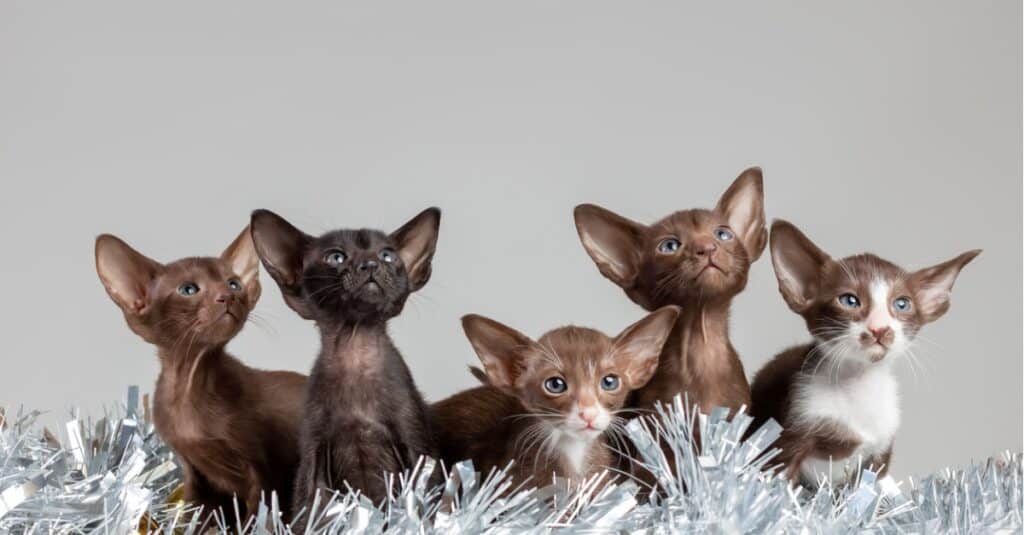
Oriental Shorthair cats are ideal for owners who want a low-maintenance pet.
©iStock.com/Irina Nedikova
If you’re looking for a friendly, easy-going hypoallergenic cat, look no further! The Oriental Shorthair makes an amazing pet for owners who desire this disposition. This breed’s short hair makes them ideal for owners looking for a low-maintenance breeding situation, as well.
Oriental Shorthair cats are considered medium-sized felines, weighing in at around 8 to 12 pounds as adults. Their bodies are almost identical to the Siamese cat’s and for a good reason. Oriental Shorthairs were developed from, and consequently, are closely related to Siamese cats.
This breed comes in a wide variety of coat colors. They can be blue, lavender, tortoiseshell, and even black! When they are brushed frequently and properly cared for, their coat shines! Even though they are not completely hypoallergenic, they are still a great option for owners with allergies.
2. Cornish Rex
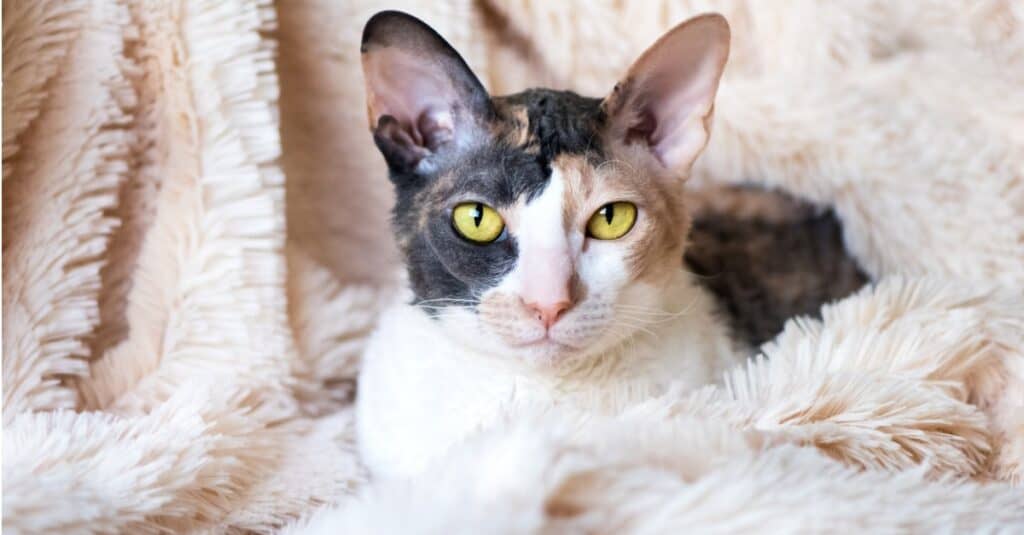
The
Cornish Rex
is known for its curly hair.
©iStock.com/rozmarina
Cornish Rexes are hypoallergenic cats who are well-known for their high energy and playfulness. They are medium-sized felines with curly whiskers and egg-shaped heads. Perhaps the most unique thing about this breed is its naturally curly coat. Scientists call it a spontaneous natural mutation.
The first known Cornish Rex cat was first discovered in Cornwall in 1950. Since its hair was similar to the Rex rabbit’s, the founder coined its name from the two. A few more distinguishing features were the animal’s strangely long back legs and large ears.
Cornish Rex cats are perfect for active families who love to spend time with their animals. This species loves climbing, running, and is always on the go.
3. Hairless Sphynx
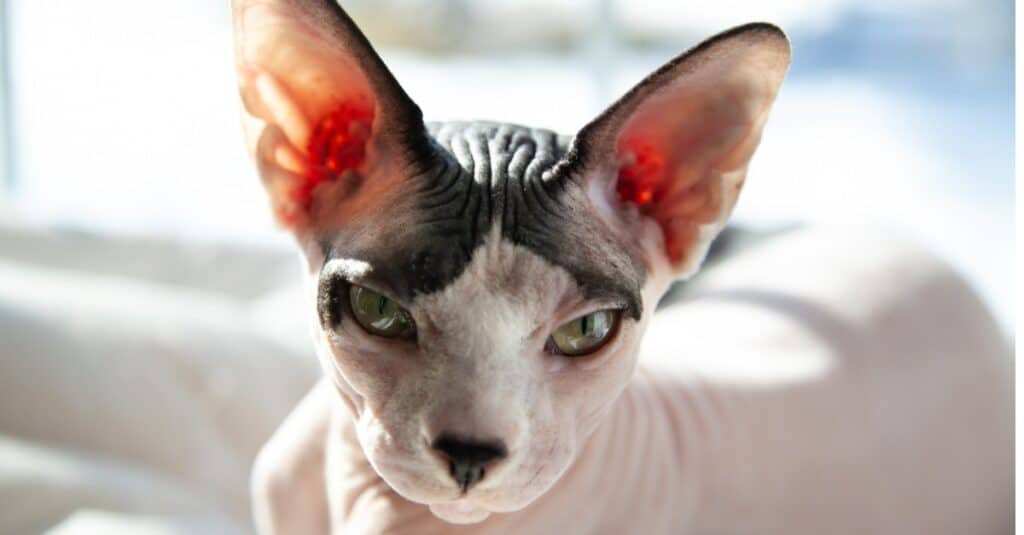
Hairless Sphynx cats are some of the most popular hypoallergenic options out there.
©iStock.com/Gemma Winston
Since they have no hair, Hairless Sphynx cats are often the first that comes to mind on the subject of hypoallergenic cats. However, they are not completely hypoallergenic. Still, they remain a great pet option for allergy sufferers. This is because they don’t leave hair behind wherever they go.
Hairless Sphynx cats need frequent baths to minimize the amount of pet dander they produce. This eliminates oils on their skin that are responsible for causing allergic reactions. Still, while bathing is a great option to decrease the oils, they can never be completely eradicated.
4. Devon Rex
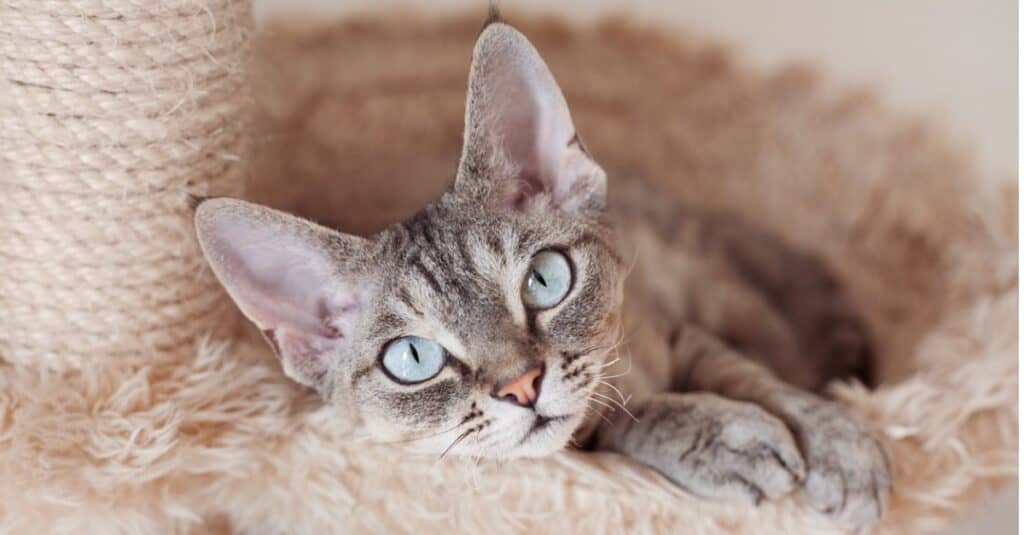
The Devon Rex was proven to be unrelated to the Cornish Rex through breed testing.
©iStock.com/insonnia
The Devon Rex is among hypoallergenic cats with short, soft coats. Their curly, short hair is not prone to shedding. Additionally, their skin doesn’t collect much oil, which makes them nearly hypoallergenic. It was originally believed that the Devon Rex was related to the Cornish Rex. However, breed testing proved this theory was incorrect.
Often called “pixie cats” for their unique appearance, Devon Rex cats have three different types of hair:
- Guard hair
- Awn hair
- Down hair
Unlike other “hypoallergenic” cats, the Devon Rex has very little guard hair. This is one of the main reasons why the breed is nearly hypoallergenic.
5. Balinese Cat
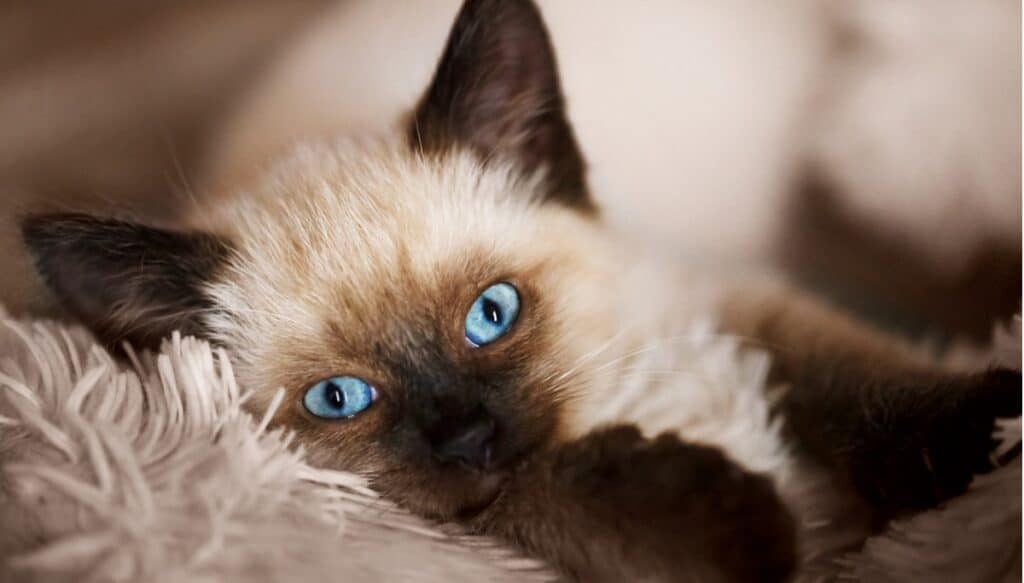
The
Balinese
cat has beautiful, bright blue eyes.
©iStock.com/Oksana Osypenko
With their siamese-like coloration, silky-smooth fur, and bright blue eyes, Balinese are a great contender among hypoallergenic cats. Their striking appearance garners special attention. Additionally, their friendly, playful nature makes them great companions.
You might be wondering how a longhair breed like the Balinese can be considered hypoallergenic. The answer is simple: they rarely shed. In fact, they are considered one of the fewest shedding breeds in the feline kingdom. Additionally, they only have one layer of fur, which makes allergy sufferers less reactive to them.
6. Russian Blue
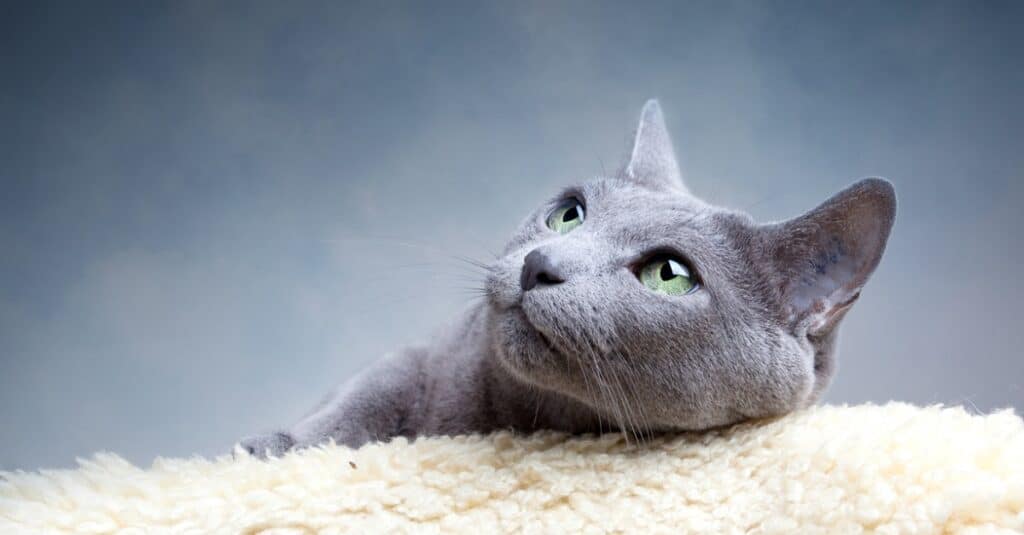
Russian Blue
cats are considered hypoallergenic due to their low levels of Fel d1.
©iStock.com/Jasper Chamber
While some hypoallergenic cats are considered so due to their fur, the Russian Blue is not. Instead, it has lower production levels of Fel d1 – the protein that many allergy sufferers are allergic to. This means that when they do shed, fewer allergens are released into the air. Consequently, diminished allergic reactions usually occur.
Russian Blue cats are famous for their laid-back, relaxed attitudes and extraordinary intelligence. They are perfectly content with curling up on the couch and relaxing anywhere they can find a comfy spot. They are generally timid and prefer to form a meaningful connection with only one person.
7. Munchkin Cat

Munchkin cats do not produce much pet dander.
©iStock.com/Phannasit Tantrakul
For allergy sufferers who react to pet dander, Munchkin cats are the perfect solution. It’s true that these are not technically considered hypoallergenic cats. However, their low amount of produced dander makes them a contender for those searching for a hypoallergenic option.
There’s no doubt that Munchkin cats are among the most adorable in the feline community. Their short, stubby legs, fluffy coats, and large eyes make them very easy on the eyes. When it comes to personality, Munchkins don’t disappoint. They are confident, playful creatures that make amazing pets.
Munchkin cats are known by a few other names, such as “kangaroo cat” and “Magpie”. Their many nicknames are derived from their upbeat, energetic personalities and appearance.
8. Siberian Cat
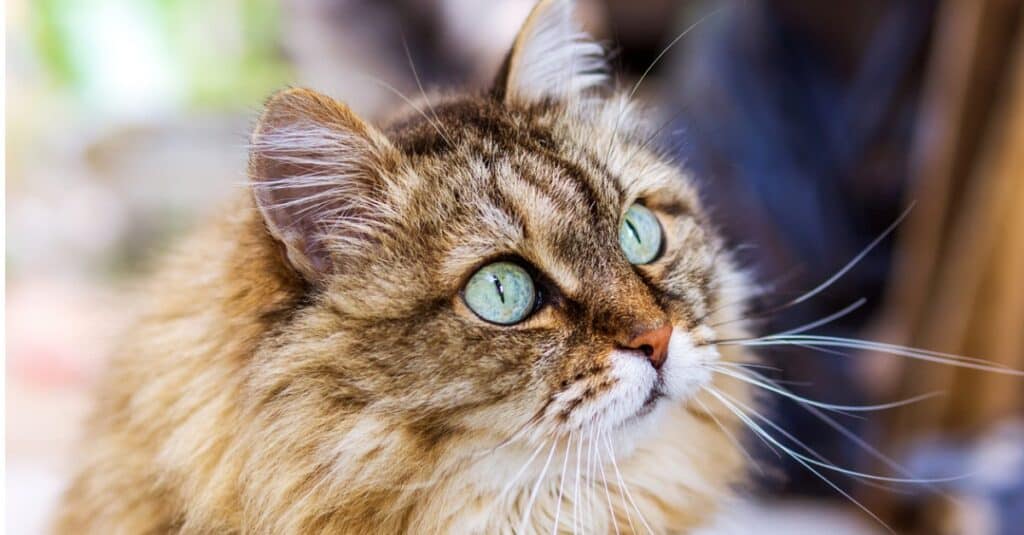
Siberian
cats can be kept by 75% of allergy sufferers!
©iStock.com/Алексей Филатов
Siberian cats are some of the most popular in the world of hypoallergenic cats. While it’s true that they produce a small amount of Fel d1, even small amounts can trigger an allergic reaction. Additionally, they undoubtedly produce pet dander, which can also aggravate allergies.
Overall, there’s no doubt that Siberian cats still pose a smaller risk to allergy sufferers when compared to other breeds. Additionally, females are reported to produce fewer allergens than males! According to researchers, around 75% of people with allergies report that they have fewer symptoms around this breed than others.
Siberian cats are famous for their fluffy coats, which make them adorable members of any allergy-ridden family. If you’ve been looking for a fuzzy friend that won’t have you sneezing, this breed could be the perfect option for you!
9. Bengal Cat
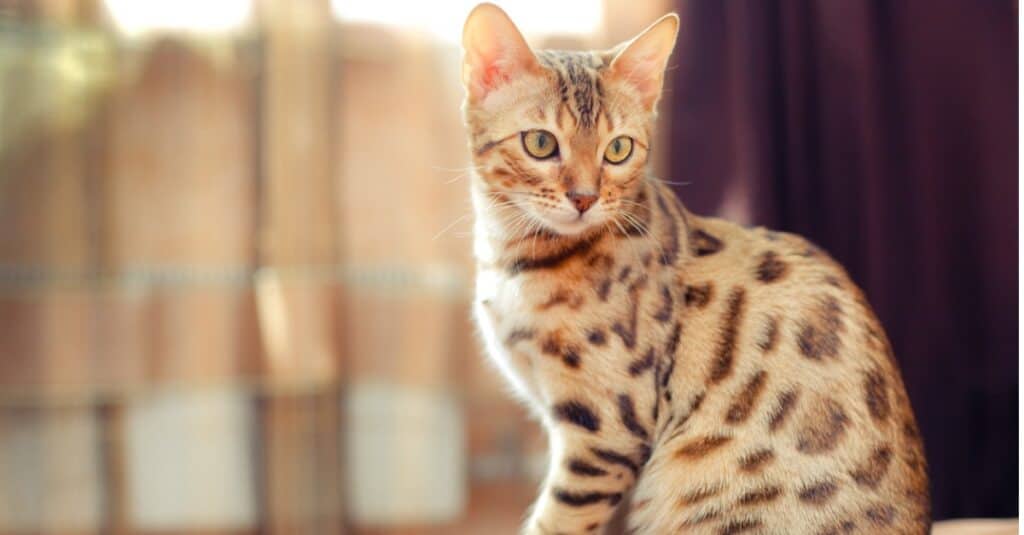
Bengal cats have pelt-like fur.
©iStock.com/Kech
The thing that makes Bengal cats so unique is also what makes them relatively hypoallergenic: their coats! Most commonly described as “pelt-like”, their fur is short, silky, and needs to be shed less frequently. In fact, the Bengal cat’s fur is more similar to a rabbit’s than to other cats’!
In addition to their fur being unique, Bengals also groom themselves less frequently than many other cats. While this doesn’t necessarily make them more hypoallergenic, it reduces the amount of pet dander and allergens released into the home. The result? Fewer allergic reactions!
One of the best ways to reduce the amount of dander and allergens released is to frequently brush a Bengal. This captures loose hair and oils on their skin that can cause allergies to flare up.
10. Burmese Cat
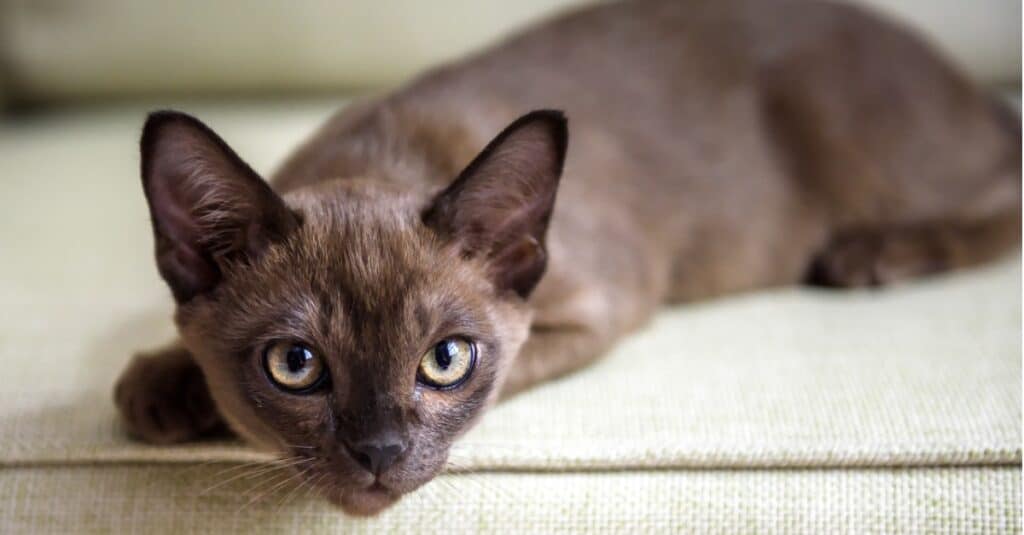
Burmese
cats are among the least-shedding felines in the world.
©iStock.com/scaliger
For those who are allergic to pet hair and dander, Burmese cats are excellent options. These hypoallergenic cats are hailed as one of the fewest shedding cats on the planet. That means that less hair, and therefore, fewer triggers are produced by this breed.
Burmese cats have unique personality traits, as well! They are often compared to dogs for their tendencies to follow their owners and their eagerness to please. Among the feline family, these traits are slow to come by, which makes the Burmese breed special. They can even learn to play fetch!
11. Siamese Cat
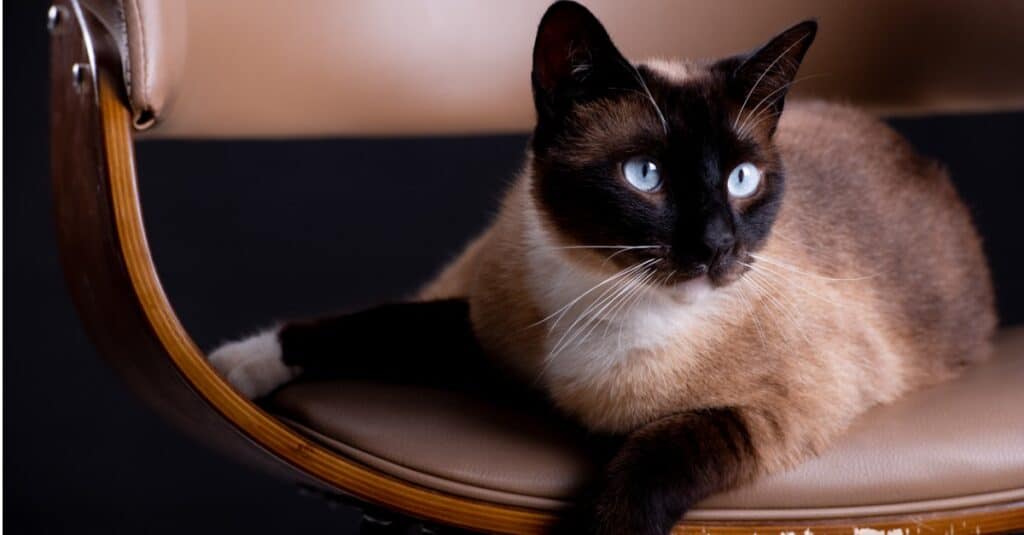
Siamese cats are among the most popular hypoallergenic breeds ever.
©iStock.com/Bahri Asma
Siamese cats are widely known as an option for hypoallergenic cats. Their extra-short fur and tendency to shed less than other breeds are the main contributing factors to that. However, they can trigger many allergies since they possess dander and a small amount of Fel d1.
Even though they aren’t completely hypoallergenic, they are still a great choice for mild to moderate allergy sufferers. Their excretions are minimal compared to other breeds. It also doesn’t hurt that they have fun personalities and are fiercely loyal. Their beautiful coats and gorgeous bright blue eyes are hallmarks of their appearance.
12. Colorpoint Shorthair Cat

Colorpoint shorthair cats are first cousins to the Siamese.
©iStock.com/~UserGI15613517
Colorpoint Shorthair cats are cousins to the Siamese, so it’s no wonder they made our list for hypoallergenic cats. In fact, they are simply a cross between the Siamese and the American Shorthair cat breeds. Both of which are considered mostly hypoallergenic.
One of the main reasons why Colorpoint Shorthair cats are considered hypoallergenic is that they don’t often shed. Additionally, since their hair is short, their coats are easier to maintain. However, frequent brushing is an important part of minimizing allergens. Consequently, it makes sense that shorthair options are the best when it comes to allergies.
13. LaPerm Cat
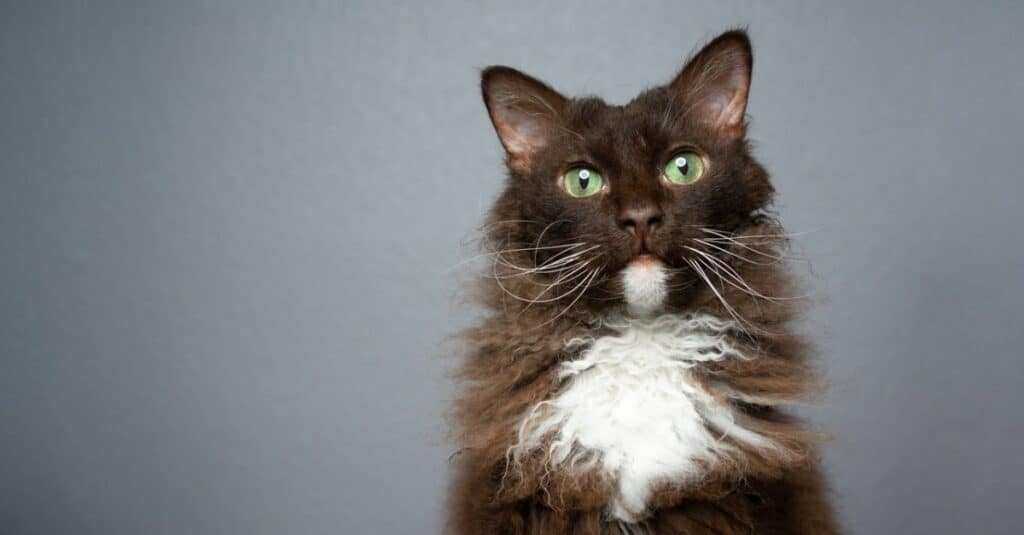
LaPerm cats shed infrequently.
©iStock.com/Nils Jacobi
LaPerm cats are considered hypoallergenic cats due to their curly fur and low shedding. They also produce a very small amount of Fel d1. Additionally, they have extremely low dander rates. This means that most mild to moderate allergy sufferers can easily cohabitate with LaPerm cats with minimal reactions.
Summary of 13 Hypoallergenic Cat Breeds
| Rank | Cat Breed |
|---|---|
| 1 | Oriental Shorthair |
| 2 | Cornish Rex |
| 3 | Hairless Sphynx |
| 4 | Devon Rex |
| 5 | Balinese |
| 6 | Russian Blue |
| 7 | Munchkin |
| 8 | Siberian |
| 9 | Bengal |
| 10 | Burmese |
| 11 | Siamese |
| 12 | Colorpoint Shorthair |
| 13 | LaPerm |
The photo featured at the top of this post is © iStock.com/Gemma Winston
Thank you for reading! Have some feedback for us? Contact the AZ Animals editorial team.






